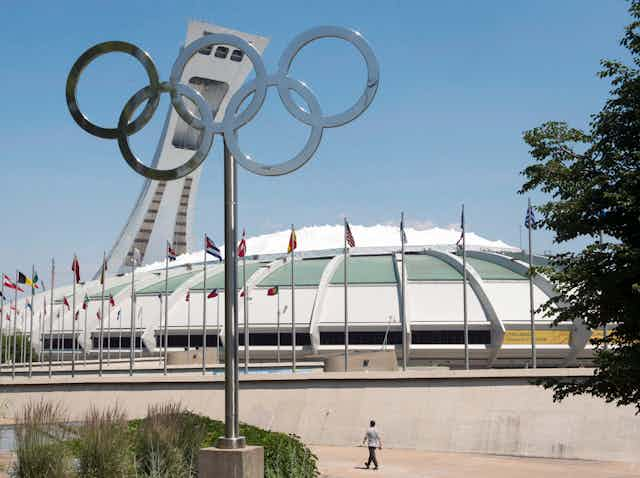Pierre de Coubertin, the father of the modern day Olympic Games, once said: “A country can truly call itself sporting when the majority of its people feel a personal need for sport.”
Is Canada a sporting nation? It’s a fair question to ask ever since Calgarians voted against a plan for the city to bid for the 2026 Winter Olympics. The lingering effects of a depressed oil market in Alberta, combined with Olympic cynicism and three levels of government taking too long to reach a funding agreement likely contributed to the resounding vote against the bid.
As an Olympian and someone deeply involved in the advancement of sport in Canada, the vote against the bid was difficult for me to reconcile. So if we are not a sporting nation by de Coubertin’s definition, should Canada host a Games in the future?
I would argue yes, but many Canadians would argue against me. And those who say we should never host another Olympics like to bring up something from a long time ago — the 1976 Montréal Olympics.
After bidding six times, Montréal became the first Canadian city to host an Olympics and the only city ever to host a Summer Games. The Montréal Olympics cost the Québec government $1.5 billion — 13 times its projected cost — and the deficit took 30 years to pay off.
The ’76 Games were held at a tumultuous time in Québec’s history — the province was struggling with a cultural war that involved fierce debates over nationalism and language laws. On top of the political turmoil, the Montréal Games had to deal with incredible construction problems with the venues — sky rocketing steel costs and disgruntled workers who walked off the job, less than a year before the Games. This was the making of a perfect storm.
More than 40 years later, the Montréal Games are still cited by many critics as the reason why Canada should never host another Olympics. I take a contrarian view. In many ways, the 1976 Montréal Olympic Games were a success.

The strength of any major Games is measured by its legacy. Holger Preuss, a German professor of sport economics, says sport legacies are the “planned and unplanned, positive and negative intangible and tangible structures created through a sport event that remain after the event.”
Tangible legacies are often grouped according to sporting development, economics and infrastructural advancement. Intangible legacies include knowledge and education, emotional and social impact, as well as providing a positive image of the host city and country. The Montréal Olympics delivered both tangible and intangible legacies that are often overlooked, but in fact are still felt today.

While great attendance and incredible performances highlighted these Games — remember gymnast Nadia Comăneci’s perfect 10s and decathlete Bruce (now Caitlyn) Jenner’s gold medal performance? — the return on investment of these intangible legacies are difficult to measure.
But the tangible legacy can be found in the lasting impact of the Olympic Park, which consists of the Olympic Stadium, Montréal Tower, the Esplanade and the Sports Centre. More than 100 million people have visited the Park since its opening.
There are many lasting legacies from the Olympic Park.
● Promoting sport development is a primary objective when hosting the Olympics and the Sports Centre is launch pad for the next generation of athletes, while promoting a physically active society by offering various recreational programs. It hosts various events throughout the year, welcoming more than 300,000 visitors, and is the home to the Institut National du Sport du Québec, which serves as a vital training ground for various national teams, athletes and coaches.
● The original Olympic Stadium — despite being given the nickname the Big Owe because of its costs overruns — has also provided the city with a valuable legacy. The domed stadium and its inclined tower has become an iconic symbol of the city. Despite no longer being home to a major sports team, the stadium is used throughout the year for sporting events, exhibitions and concerts. Hosting these large-scale events provide an economic impact to the city, realized by hotels, restaurants, taxes and transportation. Currently, the Olympic Stadium is in contention as a venue for the 2026 FIFA World Cup. If selected, Montréal could experience an economic impact of $200 million.
● Standing at 165 metres and on a 45-degree angle, Montréal Tower is the world’s tallest incline tower. Attached to the stadium, it offers a view of 80 kilometres on a good day and has become a major tourist destination, attracting more than 200,000 visitors per year. The tower is also the new head office of the Québec insurance company Desjardins, which has signed a five-year rental agreement for seven of the tower’s 12 floors.
Other tangible legacies of the Montréal Olympics include the athletes’ village that was transformed into apartments, expansion of the Métro subway lines and the establishment of Canada’s first national lottery, which was instituted to help finance the Games.
It is worth noting the Montréal Games occurred in an era before the Olympic global sponsorship program. After Montréal, the International Olympic Committee brought in a new business model that offered select advertisers exclusive partnerships and as a result, the 1984 L.A. Games generated a profit of approximately $200 million. Comparing current Olympic bids to those prior to 1984 is truly an apple and orange exercise.
While the power of sports is undeniable, it will always be a challenge for Canadian cities to bid for another Olympics. Bid organizers should identify the needs of their city — affordable housing, transportation, road development, for example — and leverage hosting a major Games to accelerate these developments.
Considering the tangible legacies, Montréal gained a lot by hosting the 1976 Olympics.


